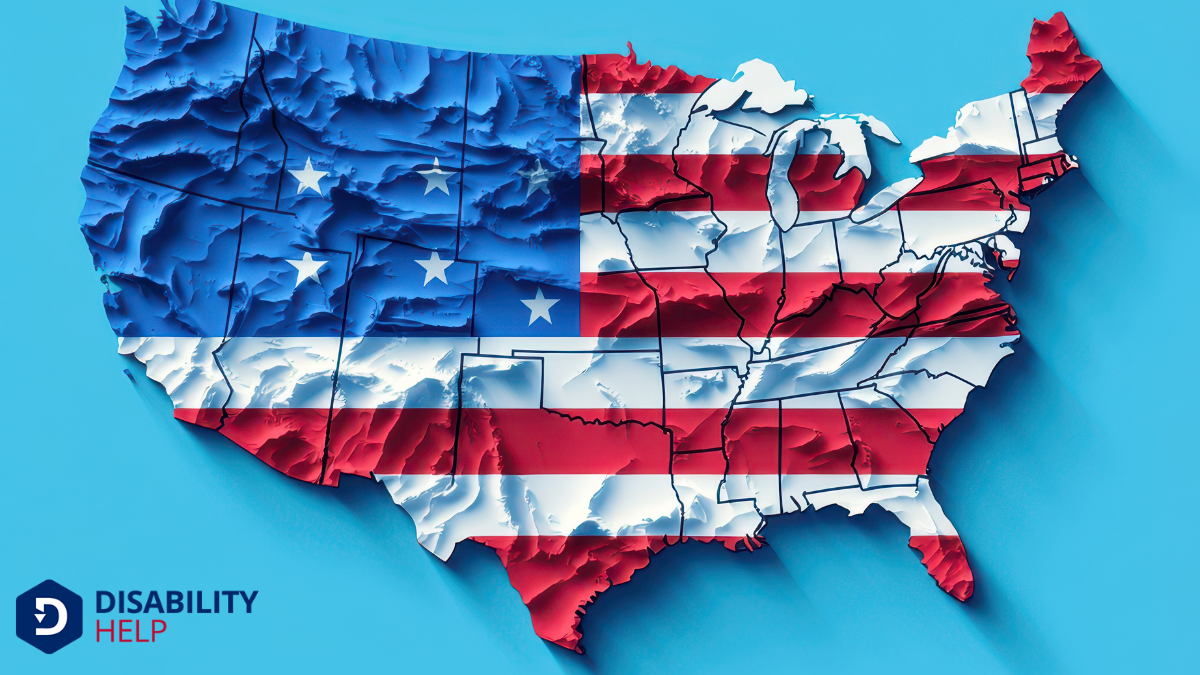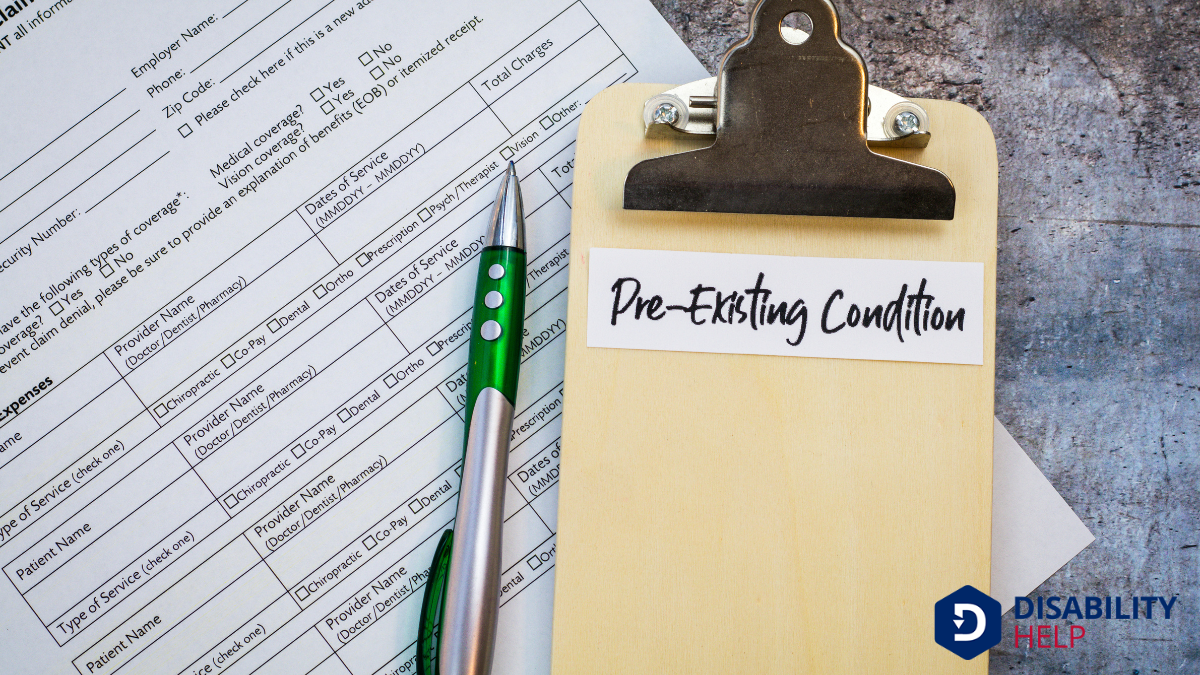We're eligible for short-term disability insuranceInsurance that provides income replacement for a limited time when an employee is unable to work due... primarily based on our employment status, medical conditions, and state regulations. Typical qualifiers include accidents, surgeries, certain illnesses, and pregnancy complications. Employment length and hours often influence eligibility, with full-time employees receiving more benefits. Age and pre-existing conditions can also play a role. Understanding state-specific rules can be vital for coverage. If we explore further, we'll uncover more details about this important benefit.
Key Takeaways
- Full-time employees usually have broader eligibility for short-term disability insuranceA form of insurance that provides income to individuals who are unable to work due to a disability. benefits.
- Eligibility often requires meeting a minimum employment duration, typically from a few months to a year.
- Qualifying medical conditions include injuries, surgeries, severe illnesses, and certified mental health issues.
- State-specific regulations can influence eligibility criteria and benefit provisions.
- Private policies offer flexibility but may have age-related restrictions and higher premiums.
Understanding Short-Term Disability Insurance
Although maneuvering through insurance options can be intimidating, understanding short-term disability insurance is essential for financial security during unexpected health challenges. This type of insurance offers temporary income replacement when we're unable to work due to a covered medical condition.
It's designed to cover a portion of our salary, ensuring we can manage daily expenses while focusing on recovery. Typically, short-term disability benefitsFinancial assistance provided to individuals who are unable to work due to a disability, such as Soc... kick in after a short waiting period, often around one or two weeks. The coverage duration varies, usually lasting from three to six months.
To secure this safety net, we might obtain coverage through an employer or purchase a policy independently. By grasping the basics of short-term disability insurance, we empower ourselves to make informed decisions and safeguard our financial well-being.
Common Qualifying Medical Conditions

Understanding which medical conditions typically qualify for short-term disability insurance can help us better assess our coverage needs. Generally, this insurance covers conditions that temporarily prevent us from performing our job duties.
Common qualifying conditions include injuries from accidents, surgeries requiring recovery time, and certain illnesses like severe infections. Conditions related to mental health, such as depressionA mental health condition marked by persistent feelings of sadness and loss of interest. or anxiety, might also be covered, provided they're debilitating and certified by a healthcare professional.
Pregnancy and childbirth often qualify as well, especially when complications arise. It’s important we consult our policy details since coverage can vary.
Employment Status and Eligibility
When we consider short-term disability insurance, our employment status considerably impacts our eligibility.
Full-time employees often enjoy more extensive benefits, but part-time workers may still have options to explore.
Let's examine how these differences affect our coverage choices and what we can expect based on our work hours.
Full-Time Employee Benefits
Full-time employees often enjoy a variety of benefits that part-time or temporary workers mightn't have access to, including short-term disability insurance. This coverage provides financial support when we're unable to work due to a temporary disability.
It's a valuable safety net that helps us manage expenses during recovery. Employers typically offer this benefit as part of a thorough benefits package, aiming to support our well-being and job satisfaction.
To qualify, we usually need to meet specific criteria set by our employer, such as completing a probationary period or working a minimum number of hours each week.
Understanding these requirements is essential, so we should review our employee handbook or speak with our HR department to verify we're eligible for this important benefit.
Part-Time Worker Coverage
While part-time workers may not always receive the same level of benefits as full-time employees, some employers do offer short-term disability coverage to part-time staff.
It’s essential for us to understand that eligibility often depends on the specific policies of the employer. We should check with our HR department to see if we're covered and what the criteria are.
Typically, eligibility can be influenced by the number of hours worked per week or the duration of employment.
If our employer doesn’t provide this benefit, exploring individual short-term disability insurance policies might be a wise alternative.
Length of Employment Requirements
When considering eligibility for short-term disability insurance, we need to understand the length of employment requirements.
Many employers require us to work for a minimum duration before we're eligible, and this often includes completing a probationary period.
Let's explore how these factors impact our access to benefits.
Minimum Employment Duration
To qualify for short-term disability insurance, many employers require a minimum employment duration, guaranteeing that employees have been with the company for a specific period before becoming eligible for benefits.
This requirement helps employers manage risks and costs associated with providing coverage. Typically, the duration could range from a few months to a year, depending on the organization’s policies.
We should check our employee handbook or speak with our HR representative to understand our company’s specific requirements.
Knowing the minimum employment duration helps us plan our financial and health safety nets more effectively.
It’s essential to keep track of our employment start date and any changes in policy that might affect our eligibility.
Let’s guarantee we’re informed and prepared for any unexpected situations.
Probationary Period Considerations
Although many of us have heard about probationary periods at work, we mightn't fully understand their impact on our eligibility for short-term disability insurance.
During this introductory phase, which typically lasts between 30 and 90 days, our employment status is often still being evaluated. Employers use this time to determine if we’re a good fit for the role and company.
However, it’s essential to know that short-term disability coverage mightn't kick in until after this period ends. We should check our employer's specific policy details to understand when coverage begins.
Differences Across States and Regions

Understanding the differences in short-term disability insurance across states and regions can be quite enlightening, as these variations greatly impact eligibility and benefits.
We must navigate through a complex landscape where regulations and provisions differ considerably. Here's how they vary:
- State-Mandated Programs: Some states, like California and New York, mandate short-term disability insurance, ensuring coverage for eligible workers. In these states, we see standardized benefits and contribution rates.
- Benefit Duration and Amount: States determine how long benefits last and their maximum amounts. For instance, in New Jersey, benefits can last up to 26 weeks, while others may offer less.
- Eligibility Requirements: Each state sets its own criteria for eligibility, including how long we must have worked or the number of hours needed to qualify.
Employer-Provided vs. Private Coverage
When we consider short-term disability insurance, we often find ourselves weighing the benefits of employer-provided coverage against private policy options.
Employer coverage typically offers the convenience of automatic enrollment and potentially lower costs.
However, private policies can provide more tailored benefits and flexibility, allowing us to choose coverage that best fits our individual needs.
Employer Coverage Benefits
While exploring short-term disability insurance, we often find ourselves weighing the benefits of employer-provided coverage against private options.
Employer coverage benefits can offer substantial advantages that might align well with our needs. Let’s look at some key benefits:
- Cost Efficiency: Many employers absorb part or all of the premium costs, reducing our financial burden considerably compared to purchasing a private policy.
- Convenience: Enrolling in an employer's plan is typically straightforward, often requiring minimal paperwork and effort on our part.
- Group Rates: Employer coverage usually comes with group rates, which can lead to better terms and conditions than those available with individual policies.
Understanding these benefits helps us make informed decisions about our insurance needs, ensuring we choose the best coverage for our circumstances.
Private Policy Options
Having considered the advantages of employer-provided coverage, we should also explore the other side of the coin: private policy options. These policies offer flexibility, allowing us to tailor coverage to our specific needs. Unlike employer plans, private options can be retained even if we change jobs, ensuring continuous coverage.
While they might've higher premiums, they often provide more extensive benefits. When evaluating private policies, we must consider factors like benefit period, waiting period, and coverage amount. It’s essential to understand the terms and conditions, as they can vary widely.
Age and Eligibility Considerations
Understanding the role age plays in determining eligibility for short-term disability insurance can help us make informed decisions. Age can influence our options and premiums, so let's explore how it impacts us:
- Minimum Age Requirements: Most policies require us to be at least 18 years old to apply. This guarantees we're legally able to enter into a contract.
- Age Limits for New Policies: Some insurers impose maximum age limits. Generally, these range from 60 to 65 years, after which new policies become inaccessible.
- Age and Premiums: As we age, premiums might increase. Older applicants may face higher costs due to perceived higher risk.
Impact of Pre-Existing Conditions

When considering short-term disability insurance, pre-existing conditions play an important role in our eligibility. Insurance companies carefully evaluate our health history to determine coverage terms. If we've had a medical condition before applying, it may affect the policy terms or waiting periods.
Insurers might exclude specific conditions from coverage or impose a waiting period before coverage kicks in. It’s vital to review the policy details to understand what’s covered and any exclusions.
We must communicate openly with our insurance provider about our medical history. By doing so, we guarantee there won’t be surprises if we need to make a claim.
Understanding how pre-existing conditions impact our eligibility helps us make informed decisions and select a policy that best suits our needs.
Application Process for Short-Term Disability
Applying for short-term disability insurance requires careful attention to detail, as it guarantees that we secure the coverage we need.
To navigate the application process efficiently, we should follow these essential steps:
- Gather Necessary Documentation: We need to collect all relevant medical records and employment information. This includes recent medical evaluations, proof of income, and any prior disability claims.
- Complete the Application Accurately: Let’s fill out each section of the application thoroughly. Double-checking for errors guarantees we present a clear and correct picture of our circumstances.
- Submit On Time: Timeliness is vital. We should adhere to submission deadlines to avoid unnecessary delays or complications in receiving coverage.
What Happens if You Don’t Qualify?
Securing short-term disability insurance coverage can provide peace of mind, but what if we don’t qualify?
It's important to remember that we still have options. First, let's review our application to guarantee we’ve provided all necessary documentation. Sometimes, missing or incorrect information can lead to disqualification.
If we still don’t qualify, exploring employer benefits is a good next step. Some companies offer alternative support, such as sick leave or other wellness programsPrograms designed to promote health and prevent disease, often including components like exercise, n....
Additionally, consider self-funded savings for emergencies. Building an emergency fund can be a practical way to prepare for unexpected situations.
Finally, check if state disability programs can offer assistance. While not every state provides this, it's worth investigating.
Conclusion
We've covered the ins and outs of short-term disability insurance, from medical conditions to employment status and regional differences. It’s essential to understand your eligibility, especially with factors like age and pre-existing conditions in play. Remember, the application process can vary, so be prepared. If you don’t qualify, explore other options for support. Ultimately, staying informed guarantees that we’re all better equipped to navigate life's unexpected challenges together.






